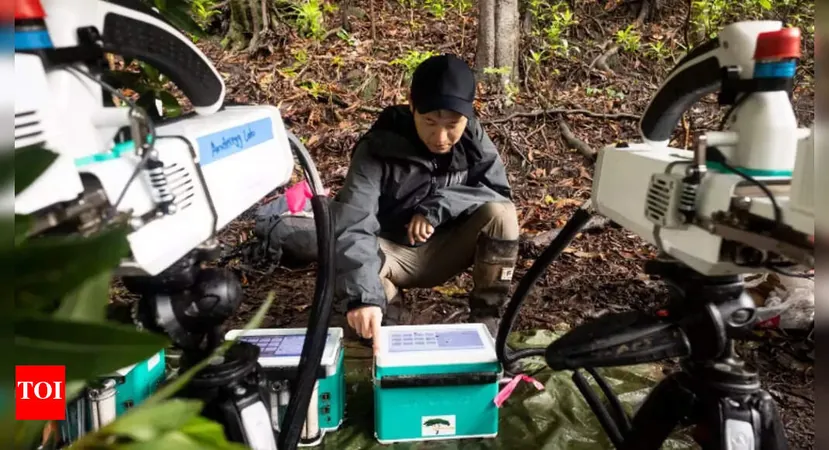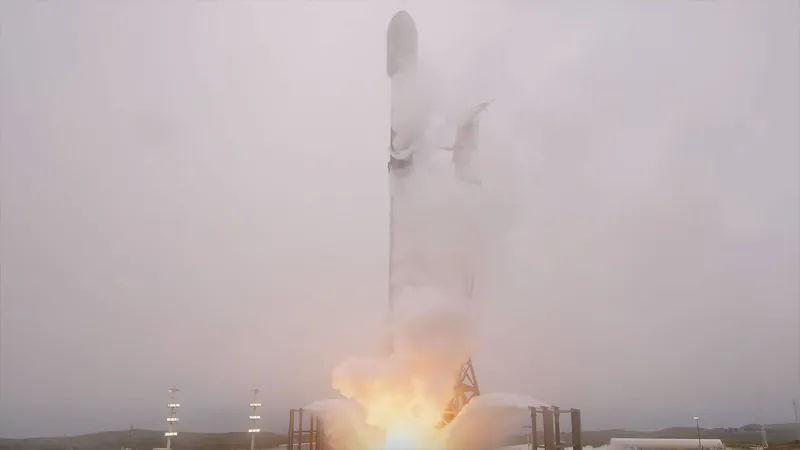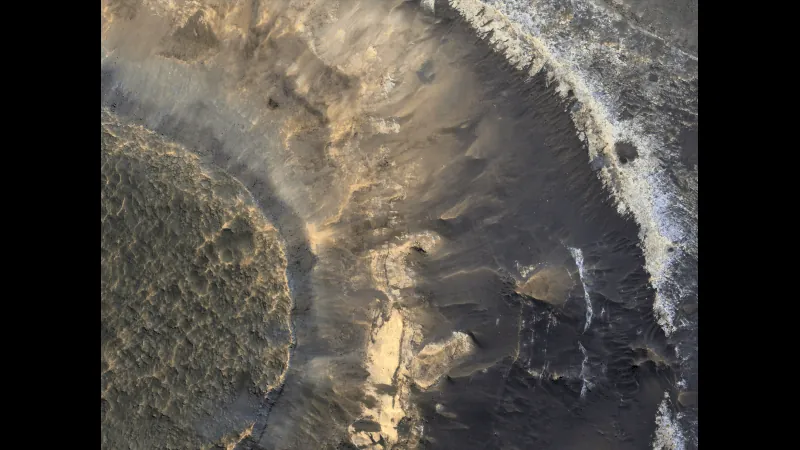
How Trees Could Unlock Secrets to Predict Volcanic Eruptions from Space!
2025-05-22
Author: Mei
A Revolutionary Method to Predict Volcanoes!
Imagine if trees could help scientists predict volcanic eruptions! Thanks to the innovative work being done using satellite data, this is becoming a reality. Researchers are now monitoring tree health in volcanic regions to catch early signs of eruption activity.
NASA’s Groundbreaking AVUELO Project
The AVUELO project, part of NASA's environmental missions, leverages advanced satellite technology to track changes in vegetation health. Trees are showing surprising signs of volcanic unrest by absorbing carbon dioxide (CO₂) emitted by magma. This increased absorption leads to healthier and greener foliage, which scientists can observe from space.
How Trees Respond to Volcanoes
As magma pushes closer to the surface, it releases volcanic gases like CO₂. While traditional monitoring relies heavily on ground sensors and seismic activity, detecting minute levels of CO₂ from space has always posed challenges. However, scientists have found that trees can act as biological indicators of volcanic activity, providing a measure of subsurface conditions.
Tracking Volcanic Activity Through Vegetation Changes
Utilizing satellite imagery and data from NASA's Landsat 8, researchers are able to see how vegetation indices, such as the Normalized Difference Vegetation Index (NDVI), change over time. Increased tree vitality might point to ongoing volcanic gas emissions, potentially giving an early warning signal of imminent eruptions.
A Real-World Example: Rincón de la Vieja Volcano
A stunning case study took place near Costa Rica’s Rincón de la Vieja volcano. Here, volcanic CO₂ transformed local vegetation, validating the concept that tree health can indeed signal volcanic activity. This type of monitoring could revolutionize how scientists predict eruptions.
Improving Early Warning Systems Globally
As Dr. Florian Schwandner from NASA emphasizes, the goal is not to replace existing volcano monitoring systems but to enhance them. Remote and forested volcanoes often lack adequate ground access, making tree response an invaluable proxy for monitoring. This could mean the difference between a timely warning and catastrophic surprises.
The Need for Ground Observations
While satellite data provides crucial insights, ground verification remains essential. By collecting leaf samples and measuring CO₂ levels on-site, researchers can ensure the reliability of the data generated from space. Dr. Nicole Guinn, a volcanologist at the University of Houston, underscores that without this correlation, our predictions would lack accuracy.
A New Era in Volcanic Research!
This pioneering research paves the way for a new tool in predicting volcanic eruptions—offering the possibility of alerts days or even weeks ahead of conventional methods. With increasing populations living near volatile volcanic areas, these findings promise to improve early warning systems globally, utilizing trees as vital indicators of danger.




 Brasil (PT)
Brasil (PT)
 Canada (EN)
Canada (EN)
 Chile (ES)
Chile (ES)
 Česko (CS)
Česko (CS)
 대한민국 (KO)
대한민국 (KO)
 España (ES)
España (ES)
 France (FR)
France (FR)
 Hong Kong (EN)
Hong Kong (EN)
 Italia (IT)
Italia (IT)
 日本 (JA)
日本 (JA)
 Magyarország (HU)
Magyarország (HU)
 Norge (NO)
Norge (NO)
 Polska (PL)
Polska (PL)
 Schweiz (DE)
Schweiz (DE)
 Singapore (EN)
Singapore (EN)
 Sverige (SV)
Sverige (SV)
 Suomi (FI)
Suomi (FI)
 Türkiye (TR)
Türkiye (TR)
 الإمارات العربية المتحدة (AR)
الإمارات العربية المتحدة (AR)